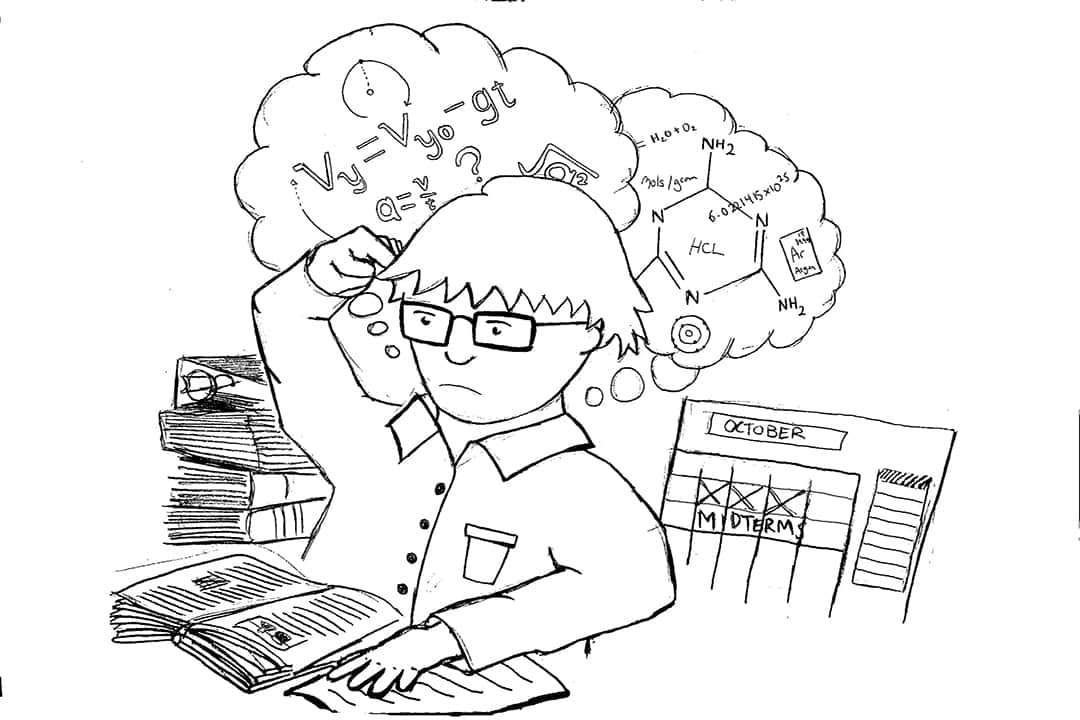As midterm season creeps our way, students may wonder about what U of T academic resources are available. Finding such resources can be a rather challenging task, especially for first-year students. To help students navigate midterms, The Varsity has consolidated U of T resources for midterms, plus tips from upper-year students.
U of T resources
The university provides many ways students can seek help ahead of midterms.
The Academic Success Department provides resources including multi-part workshops — such as “Learning Labs,” “Learning Well in First Year,” and “Learning Well in Second Year” — that can help you learn new study strategies and mend them to fit your learning style and needs. The department also provides study hubs: scheduled times for you to study in a group.
Through the department, you can also schedule one-on-one appointments with learning strategists. The department plans to create a tutor directory soon to help connect you with other U of T students who excel in a particular subject.
Facilitated Study Groups (FSGs) — sessions organized by the university on all campuses — allow students to interact with upperclassmen who have excelled in the particular courses. FSGs can be “really helpful in clarifying concepts because it is run by past students,” wrote Magdalene Abebe, a third-year student studying neuroscience and biochemistry, in an email to The Varsity.
However, if group work isn’t the most productive for you, all professors and teaching assistants have office hours for one-on-one help. In an email to The Varsity, Pranami Harsora, a third-year student majoring in molecular biology, immunology and diseases with minors in political science and psychology, urged students to “go to office hours as often as possible” as professors can advise them on the most effective ways to study for their class.
U of T also offers past papers for most courses online on the U of T Old Repository Exams. Abebe wrote that the repository allows students to “get a feel of what a university exam is like before [you take] your own.”
Tips & tricks
In addition, Harsora and Abebe had different study methods which demonstrates how a student may adjust their study methods to enhance their personal learning.
Firstly, Abebe uses active recall, which includes testing oneself and using knowledge instead of digesting information again. Active recall can include using flashcards and explaining content to others out loud. In a widely cited article published in 2011 in the journal Science, Purdue University Professor Jeffrey Karpicke and Anderson University Assistant Professor Janell Blunt note that activities where teachers require students to retrieve knowledge produce more learning than “elaborative” studying, in which students focus on relearning knowledge by digesting information.
Furthermore, Harsora uses the Pomodoro technique, a system in which one works for 25-minute sessions with five-minute breaks after the first three stretches and longer breaks after the fourth session.
In a 2023 study published in the British Journal of Educational Psychology, Felicitas Biwer and colleagues randomly assigned students to choose when they wanted to take a break, use the Pomodoro technique, or take a three-minute break after each 12-minute study session. They found that, although the amount of work students completed didn’t differ significantly between the tested groups, students who used the Pomodoro technique or breaks every 12 minutes reported less fatigue and distraction and better concentration and motivation compared to the students who decided for themselves when they took breaks.
Also, Harsora noted that it’s important to have a dedicated quiet study space. On a university campus, it may not always be easy to find a “quiet” room, so they suggested investing in a good pair of noise-cancelling headphones.
Still, Abebe finds working in spaces with other students useful because “it’s encouraging to see those around you working hard.” Harsora wrote that having someone to study with also helps keep you accountable.



No comments to display.